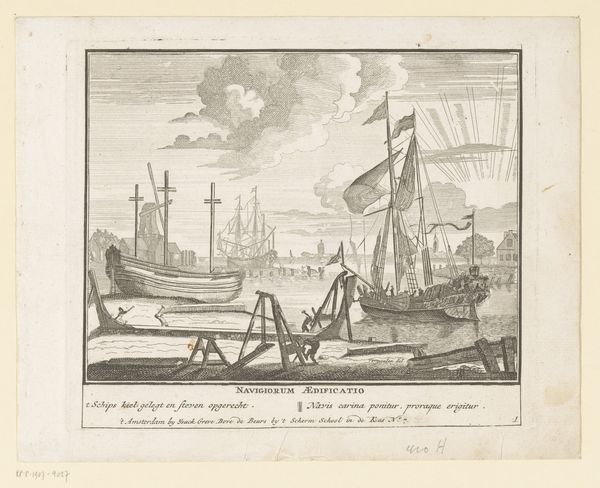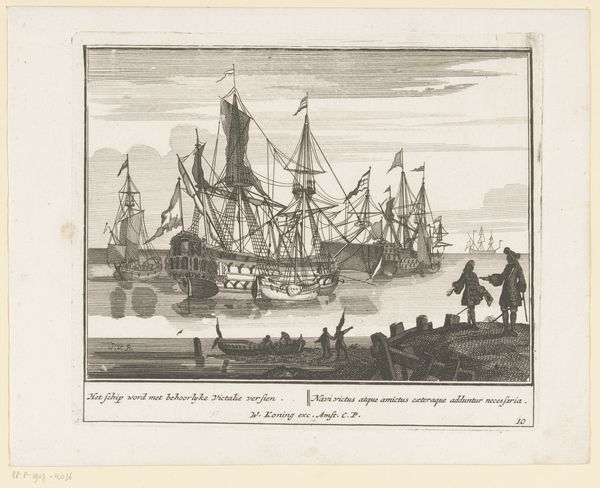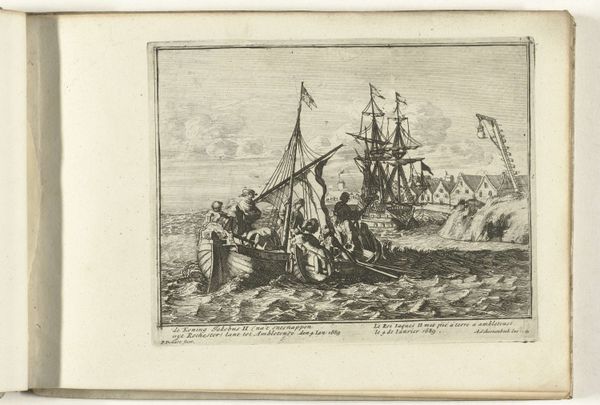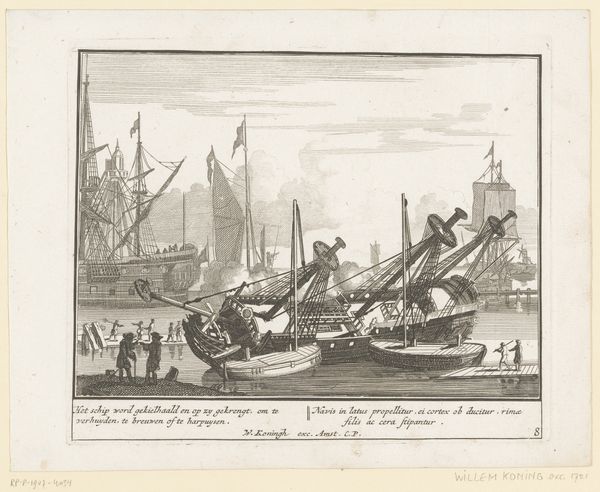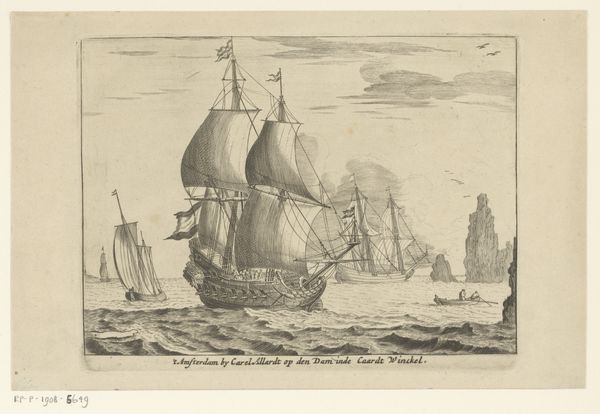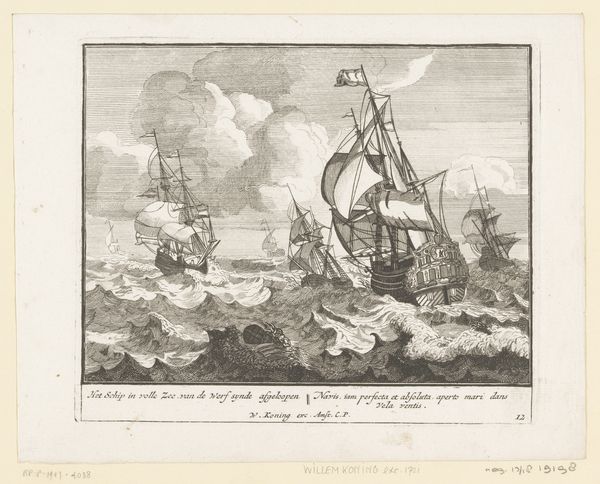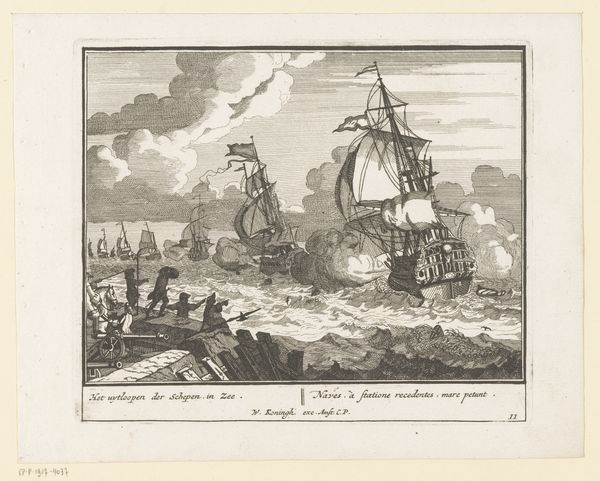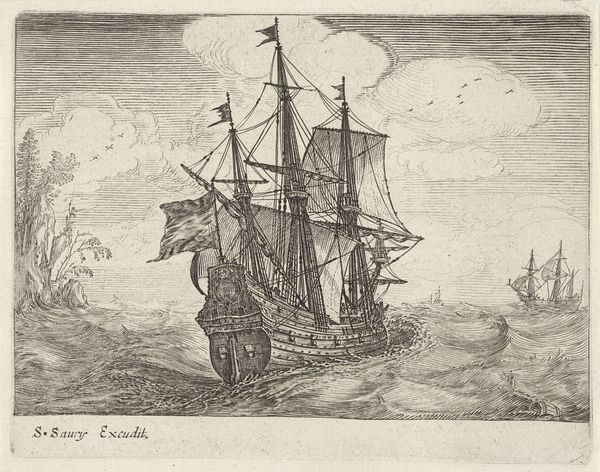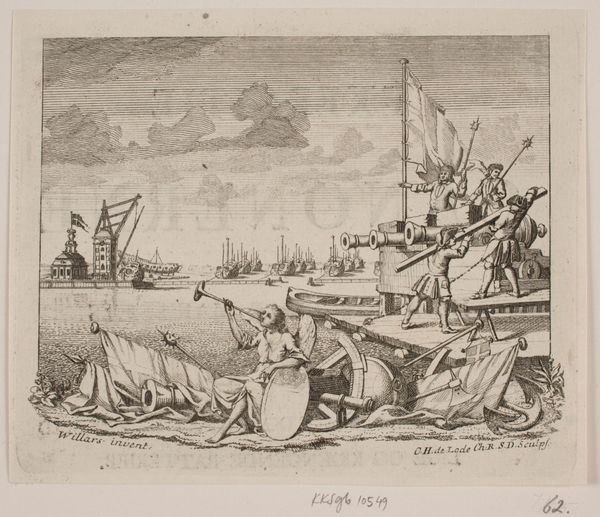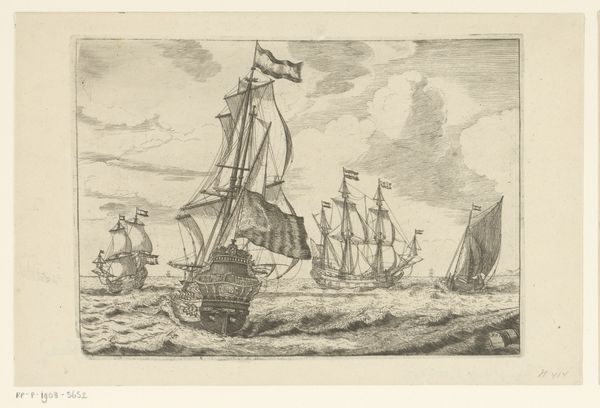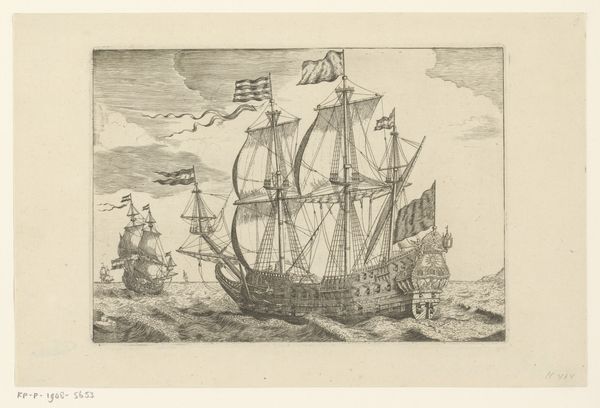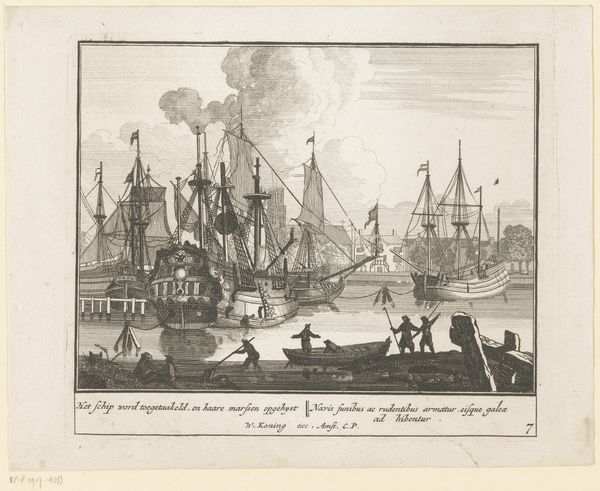
print, engraving
#
baroque
# print
#
landscape
#
figuration
#
cityscape
#
engraving
Dimensions: height 161 mm, width 192 mm
Copyright: Rijks Museum: Open Domain
Editor: This engraving, “Schip wordt op de andere zijde gekeerd,” by Pieter van den Berge, made sometime between 1717 and 1732, shows a ship being careened or heeled over for repairs. The scene has this slightly off-kilter feel because of the tilted ship. What do you see in this piece beyond the obvious nautical scene? Curator: I see a depiction of labor and infrastructure interwoven with the vast, often romanticized image of seafaring. Look closely – it’s not just about the grandeur of ships, but the mechanics and collective effort required to maintain them. These people are doing difficult, dangerous work, propping the ship at what looks like precarious angles. How does this shift in perspective – focusing on the labor rather than the voyage itself – alter your understanding of the maritime narrative so prevalent in art of this era? Editor: I see what you mean. It’s usually about the adventure and the destination, not so much about the maintenance that keeps everything afloat. Curator: Exactly. And who are these laborers? Are they free men, indentured servants, enslaved people? Consider the social and political implications inherent in portraying this essential but often invisible workforce. What power structures are at play in this port city? Think about global trade and the complicated labor relations it relied on to function. Editor: It makes me think about whose stories get told and whose get left out. I’ll definitely be looking at similar works with new eyes now. Curator: Precisely. Engaging with art requires questioning not only what is shown but also what is deliberately obscured, or what is unintentionally revealed. This engraving is a valuable lens for reconsidering our perception of labor, power, and the sea.
Comments
No comments
Be the first to comment and join the conversation on the ultimate creative platform.

